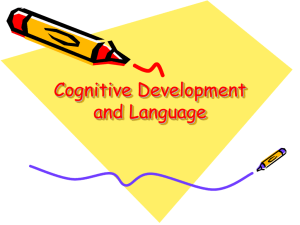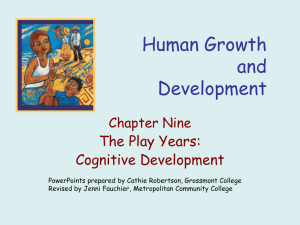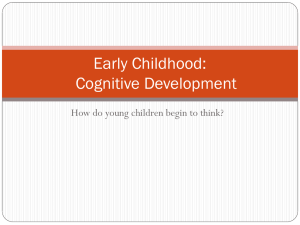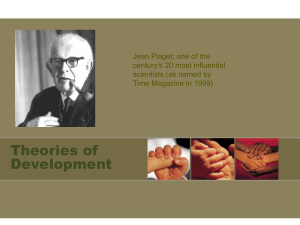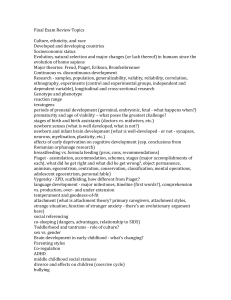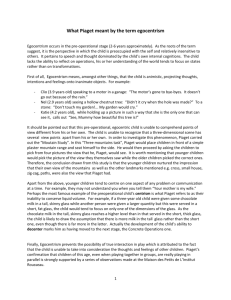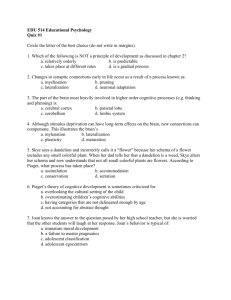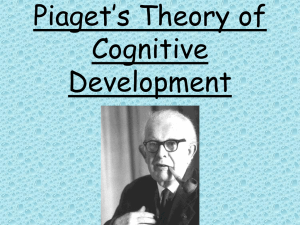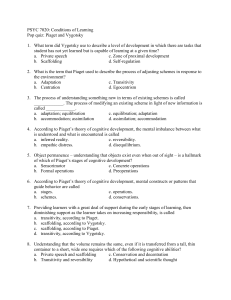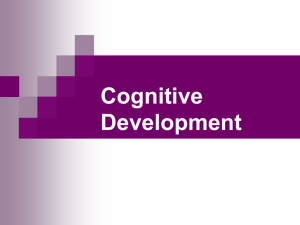Guide to Lesson 12
advertisement
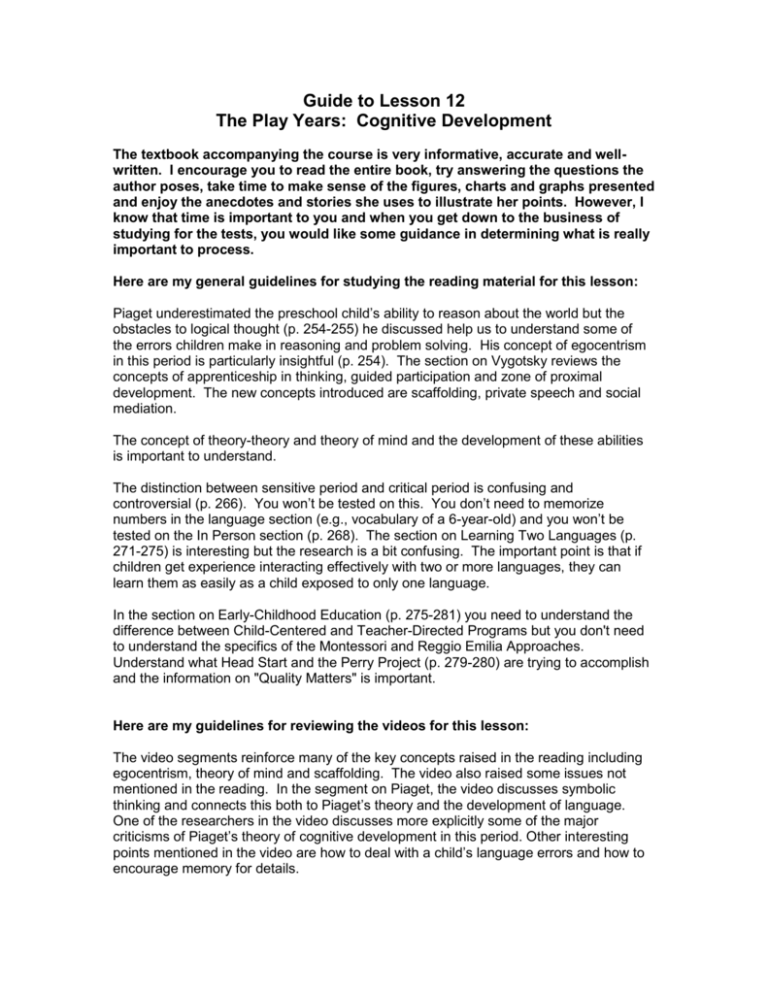
Guide to Lesson 12 The Play Years: Cognitive Development The textbook accompanying the course is very informative, accurate and wellwritten. I encourage you to read the entire book, try answering the questions the author poses, take time to make sense of the figures, charts and graphs presented and enjoy the anecdotes and stories she uses to illustrate her points. However, I know that time is important to you and when you get down to the business of studying for the tests, you would like some guidance in determining what is really important to process. Here are my general guidelines for studying the reading material for this lesson: Piaget underestimated the preschool child’s ability to reason about the world but the obstacles to logical thought (p. 254-255) he discussed help us to understand some of the errors children make in reasoning and problem solving. His concept of egocentrism in this period is particularly insightful (p. 254). The section on Vygotsky reviews the concepts of apprenticeship in thinking, guided participation and zone of proximal development. The new concepts introduced are scaffolding, private speech and social mediation. The concept of theory-theory and theory of mind and the development of these abilities is important to understand. The distinction between sensitive period and critical period is confusing and controversial (p. 266). You won’t be tested on this. You don’t need to memorize numbers in the language section (e.g., vocabulary of a 6-year-old) and you won’t be tested on the In Person section (p. 268). The section on Learning Two Languages (p. 271-275) is interesting but the research is a bit confusing. The important point is that if children get experience interacting effectively with two or more languages, they can learn them as easily as a child exposed to only one language. In the section on Early-Childhood Education (p. 275-281) you need to understand the difference between Child-Centered and Teacher-Directed Programs but you don't need to understand the specifics of the Montessori and Reggio Emilia Approaches. Understand what Head Start and the Perry Project (p. 279-280) are trying to accomplish and the information on "Quality Matters" is important. Here are my guidelines for reviewing the videos for this lesson: The video segments reinforce many of the key concepts raised in the reading including egocentrism, theory of mind and scaffolding. The video also raised some issues not mentioned in the reading. In the segment on Piaget, the video discusses symbolic thinking and connects this both to Piaget’s theory and the development of language. One of the researchers in the video discusses more explicitly some of the major criticisms of Piaget’s theory of cognitive development in this period. Other interesting points mentioned in the video are how to deal with a child’s language errors and how to encourage memory for details. One advantage of the video is you get to actually see some of the little “tests” researchers do to determine a child’s cognitive abilities. For instance, you see a child making mistakes in a conservation of volume task, you see how a test for egocentrism might be set up and the theory of mind test with the discrepant event (a band-aid box with crayons in it) is demonstrated and discussed. The segment on high quality early childhood education covers much the same information as is covered in the book.


